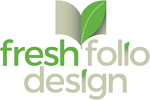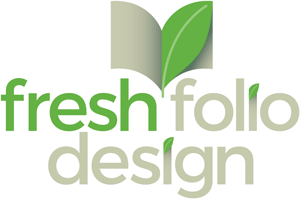There is a prevalent myth that people are either “left-brain dominant” or “right-brain dominant”. The Left Brainers are more analytical and logical, while the Right Brainers are intuitive and creative.
Current research has shown the brain is not split and is actually strongest when the two halves work together.
In looking at the attributes of the two hemispheres of the brain, it got me thinking about how those characteristics apply to a strong brochure.
Let’s review some of these attributes associated with each hemisphere and show how pairing them makes for a stronger brochure.
Logical with Story
 It’s important when creating a brochure to have a clear purpose. For example, if you have a new product, the logical choice is to let the customer know this product exists.
It’s important when creating a brochure to have a clear purpose. For example, if you have a new product, the logical choice is to let the customer know this product exists.
What kind of engagement do you think you will get if you say, “HERE’S OUR NEW PRODUCT” followed by a list of its features?
The strongest brochure choice would be to take the information and craft a story around it.
For example, we had a project where our client had a new health program to offer its members and they wanted to increase participation with this program.
Rather than just give the data about what the program offered, we created a story around a fictitious character, “Jane Wellness,” and walked through the various activities she participated in.
The same information was communicated; however, by using a story it became more engaging. The reader was able to picture themselves in the story and see how simple participation in the program would be.
Analytical While Visual
 You have information that you want your audience to know. Maybe your data shows how your widget performs better than the competition’s.
You have information that you want your audience to know. Maybe your data shows how your widget performs better than the competition’s.
If you just put that out as text, there is a whole portion of your audience that won’t ever read it.
Most people are skimmers. Given limited time and attention, oftentimes, people will only read provided they have sufficient interest in a given topic.
The strong brochure choice is to take the information and craft a compelling visual for it.
Companies who are able to couple their data with compelling visuals and graphics stand out from the competition. If you hear a piece of information, three days later you’ll only remember 10% of it. However, if an image is included that pertains to that information, you’ll remember 65% of the information. (Source)
We were working with a non-profit on a fundraising campaign and midway through the campaign donations were declining.
In the next newsletter, we crafted visuals showing the programs funded through these donations and created graphics providing a status update.
These visuals ignited the audience and helped the campaign end strong.
Even if your topic doesn’t easily lend itself to visuals or charts, a good designer can use your information in visual ways to help capture your audience’s attention.
In a recent study by the Content Marketing Institute, the effectiveness rating for Infographics showed the largest increase, jumping from 50% last year to 58% (Page 16).
Infographics are huge right now and I think that speaks to how effective the pairing of analytical with visual can be.
Structure with Surprise

When designing it is important to have a hierarchy. Using font sizes, colors and accompanying visuals, a designer establishes this hierarchy which creates a path for your audience to follow.
Without a strong hierarchy, a brochure can become confusing and most likely lose the audience it’s intended to attract.
The challenge is to create a structure that is visually pleasing, but doesn’t result in a brochure becoming boring and bland.
The strong brochure choice would be to introduce a visual surprise within the established structure of a brochure.
A “visual surprise” sounds like the equivalent of a jump-scare in a horror movie. “Let me sit down and read through this lovely brochure covering new techniques in spark plug technology… AHHH, Clown!”
Actually, the visual surprise we are referring to would be a pleasant discovery. Like putting on a jacket you haven’t worn in a while and finding $20 in the pocket.
Here’s an example of a visual surprise strengthening a brochure.
We were creating a recruitment brochure for a medical association that was pursuing recent medical graduates for membership. We wanted to communicate the values of the association and the benefits that membership would provide.
Through a muted color palette and serif font, we established a structure that reflected high-quality professionalism.
However, we also realized that these young doctors recently graduated. As they transitioned from student to professional, they had many decisions to make and could easily feel overwhelmed in the process.
We wanted to address both of these potentially conflicting dynamics. So, we introduced testimonials from other association members in a handwritten font to provide a more “personal” element.
The organic nature of the font contrasted with the established structure. In addition, the tone of a testimonials departed from the remainder of the text.
The next time you are designing a brochure, keep these dualities in mind. Or, possibly review previous brochures that you have encountered. Do you see some of these pairings present in a brochure that caught your attention? Or have you possibly seen a mediocre brochure that could have benefited from applying one of these pairings.
We’d love to hear any observations you have. Or, if you see examples of right-brain & left-brain concepts working together effectively, drop us a line.




Leave a Reply